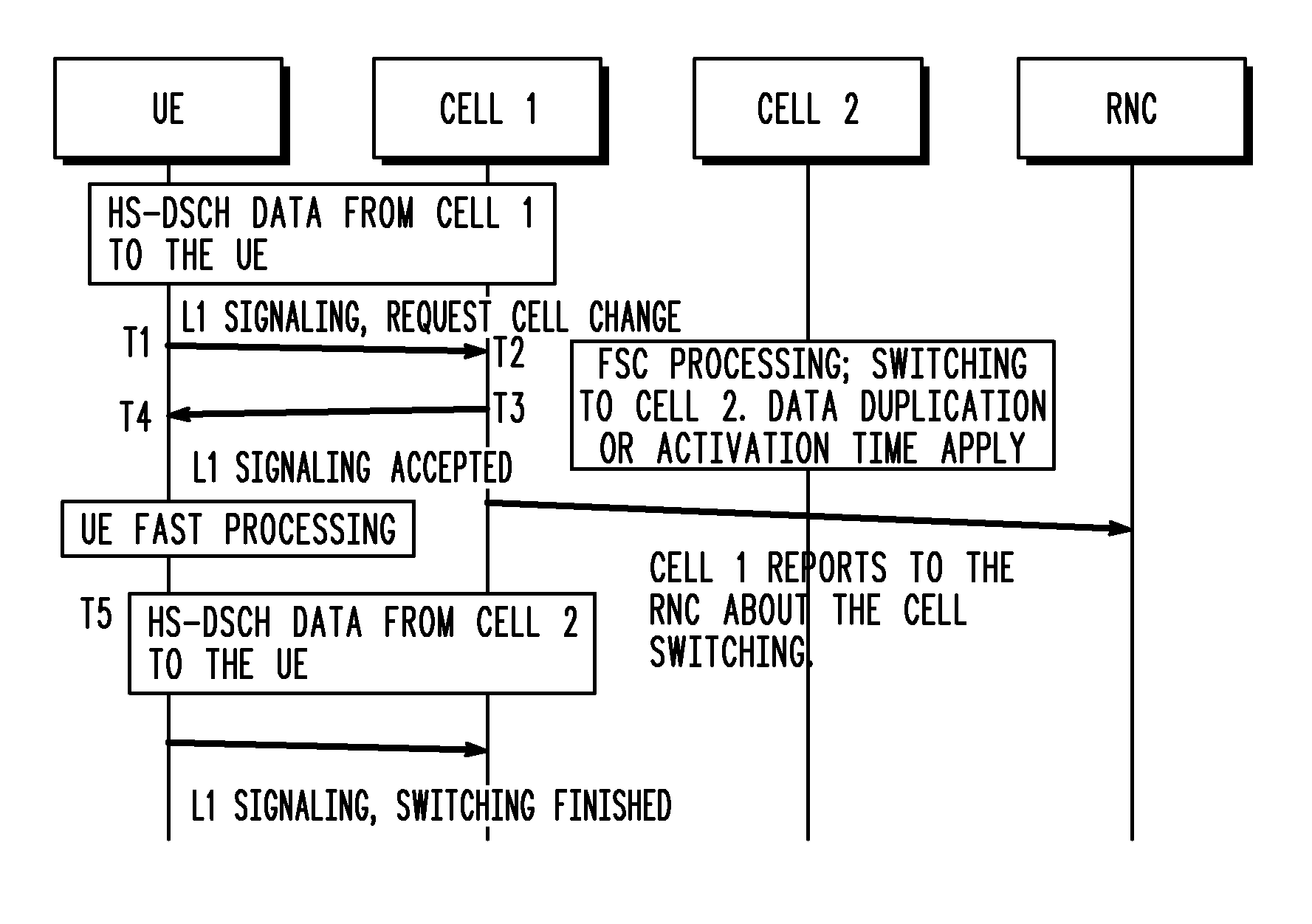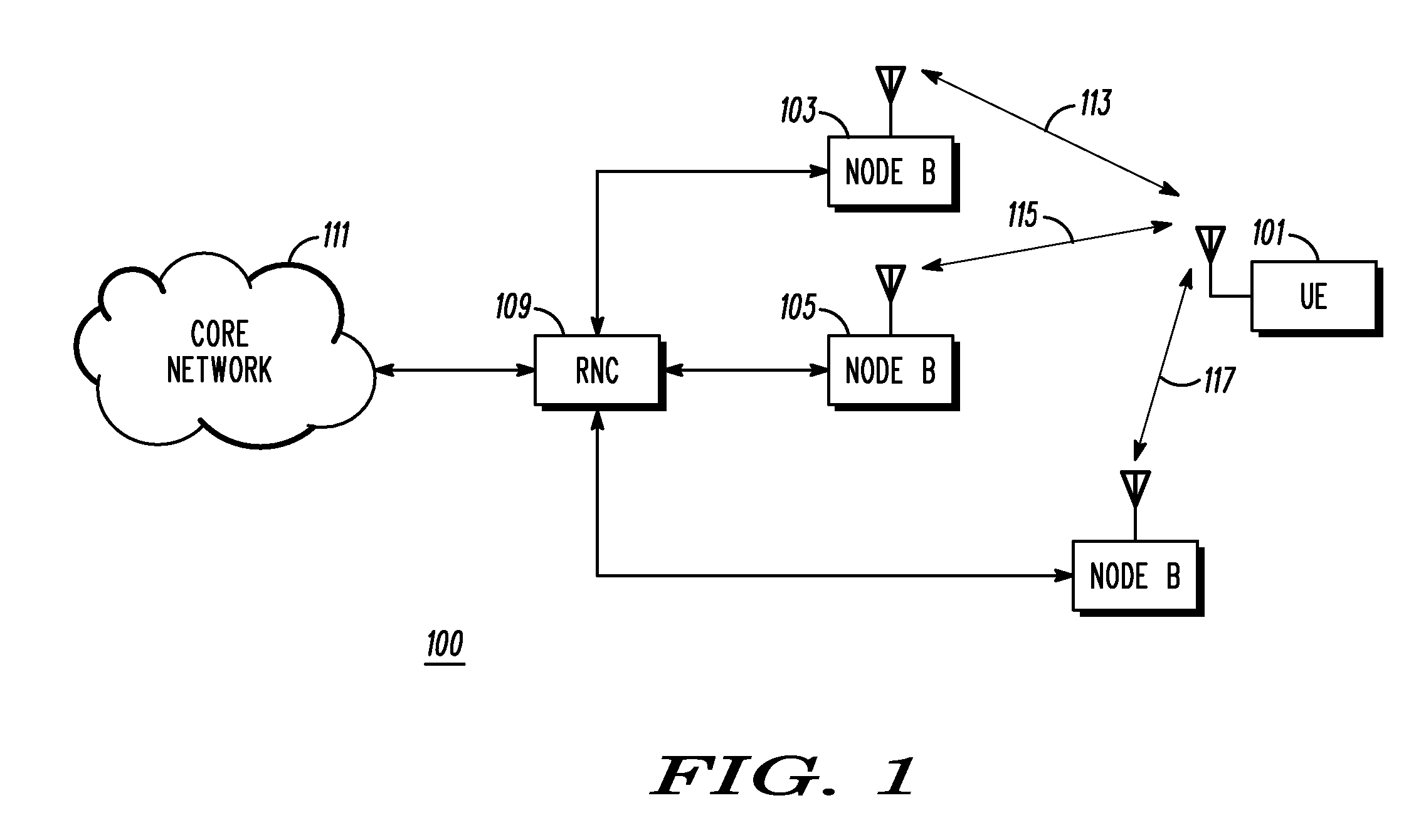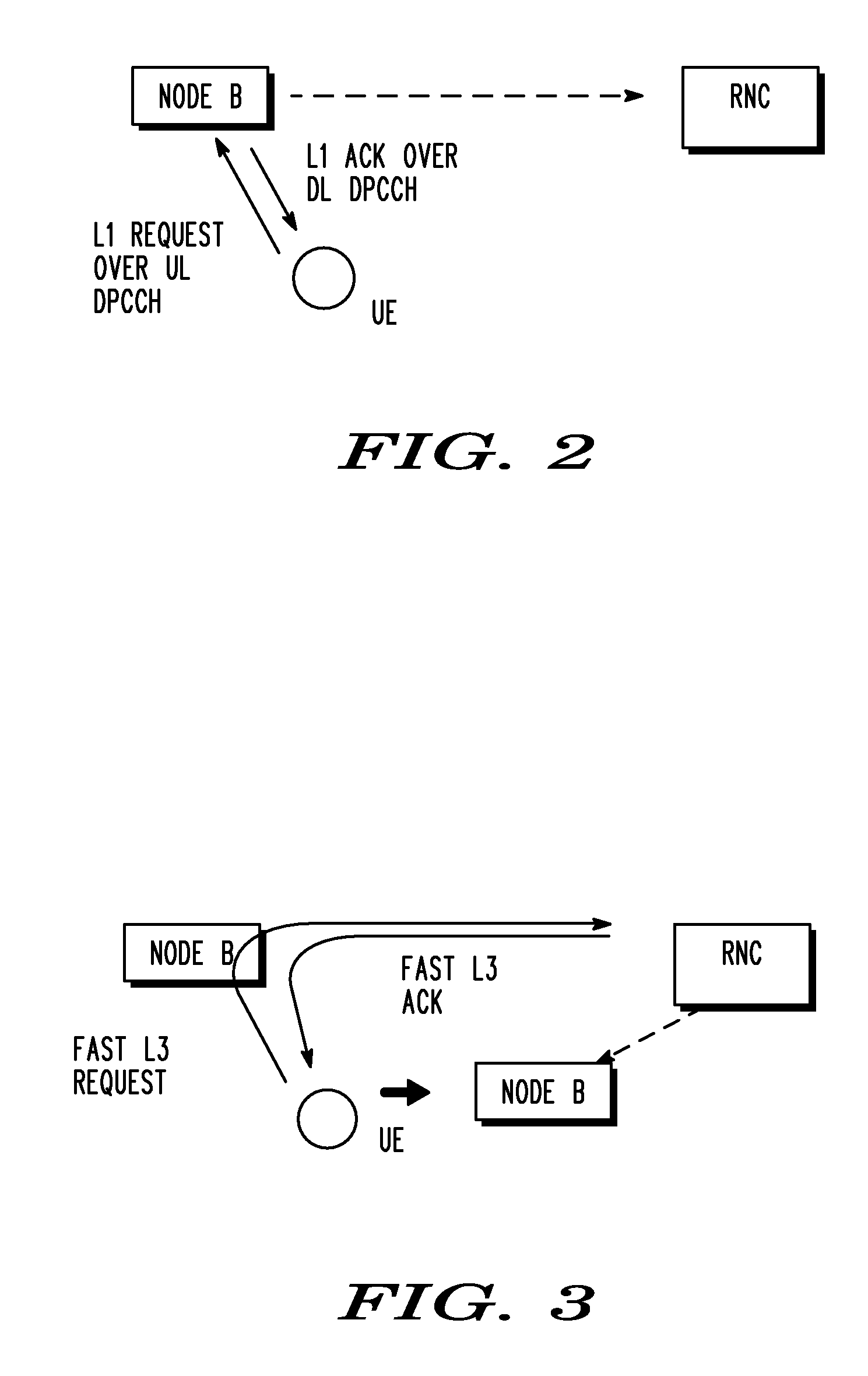Mobility enhancement for real time service over high speed downlink packet access (HSDPA)
a high-speed downlink and packet access technology, applied in the field of determining radio link characteristics, can solve the problems of transmission reliability in the serving, the delay of cell change can be much higher, and the delay of cell selection during handover
- Summary
- Abstract
- Description
- Claims
- Application Information
AI Technical Summary
Problems solved by technology
Method used
Image
Examples
Embodiment Construction
[0028] The present invention provides a network and method to provide mobility enhancements for the real-time services over HSDPA using a hybrid technique to alleviate the aforementioned drawbacks. In the description below, a VoIP service is used an example. However, it should be recognized that the novel approach of applicants' invention can be extended for other real-time services.
[0029] Although, the present invention is described below for a UMTS embodiment, it should be realized that the present invention is not limited thereto and is equally adaptable to other communication systems, including base stations and radiotelephone communication devices for example. In its simplest embodiment, the present invention applies the following technique for the mobility enhancement for downlink packet access, such as HSDPA for example. First, provide pre-configuration of the UE and HSDPA active subset of cells. Next, signal the HSDPA active subset to the UE and specifically identify the ce...
PUM
 Login to View More
Login to View More Abstract
Description
Claims
Application Information
 Login to View More
Login to View More - R&D
- Intellectual Property
- Life Sciences
- Materials
- Tech Scout
- Unparalleled Data Quality
- Higher Quality Content
- 60% Fewer Hallucinations
Browse by: Latest US Patents, China's latest patents, Technical Efficacy Thesaurus, Application Domain, Technology Topic, Popular Technical Reports.
© 2025 PatSnap. All rights reserved.Legal|Privacy policy|Modern Slavery Act Transparency Statement|Sitemap|About US| Contact US: help@patsnap.com



